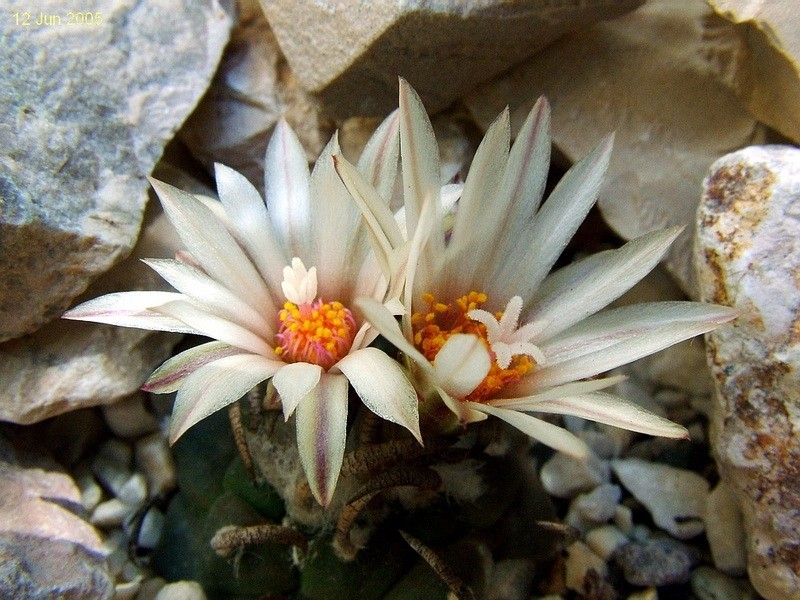Turbinicarpus schmiedickeanus
(Turbinicarpus schmiedickeanus)

Description
Turbinicarpus schmiedickeanus is a species of plant in the family Cactaceae. It is endemic to Nuevo León, San Luis Potosí, Tamaulipas states of northeastern Mexico. Its natural habitat is hot deserts. It is threatened by habitat loss. Turbinicarpus is a genus of very small to medium-sized cacti, which inhabit the north-eastern regions of Mexico, in particular the states of San Luis Potosí, Guanajuato, Nuevo León, Querétaro, Hidalgo, Coahuila, Tamaulipas and Zacatecas. The taxon was first proposed by Curt Backeberg as Strombocactus subgenus Turbinicarpus. It was elevated to a genus in 1937 by Franz Buxbaum and Backeberg. The circumscription of Turbinicarpus has been described as "remarkably unstable", with species regularly transferred to other genera. Its taxonomic history is often mixed with that of other genera like Echinocactus, Echinomastus, Gymnocactus, Mammillaria, Neolloydia, Normanbokea, Pediocactus, Pelecyphora, Strombocactus, Thelocactus and Toumeya, as the results of almost two centuries of constant evolution in the understanding of the affinities and relationships inside the family Cactaceae. A genus revision by Davide Donati in 2003, and again in 2004 with Carlo Zanovello, was based on a wide range of characters. At the end of that study, Rapicactus was considered a distinct genus from Turbinicarpus. The genus Turbinicarpus was subdivided in two subgenera at the light of the results of the DNA analysis, and into many series because of the ontogeny of the spination. The broad circumscription of Turbinicarpus was recognized as polyphyletic by Hunt in 2016. These succulent plants grow mostly on limestone soil (never on volcanic soil), at altitudes between 300 and 3300 metres above sea level. Turbinicarpus species are usually confined to specific habitats, generally hostile for the majority of plants, mostly in very drained rocky areas, composed of limestone, sandstone, schist (neutral or alkaline), or in very acidic and humiferous understorey, or in gypsum veins, sometimes so pure that they are almost white. In particular, Turbinicarpus sensu stricto is adapted to extreme niches: more than 80% of the species grow in rock cracks or among the pebbles beneath them, where enough dust has accumulated to enable root development.
Taxonomic tree:







